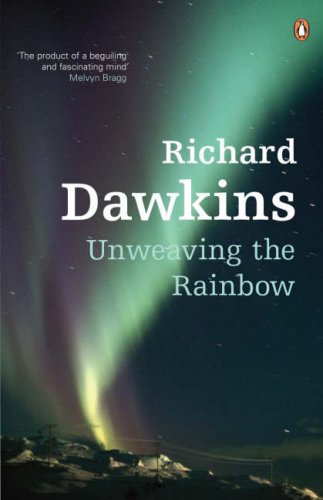Richard Dawkins: Unweaving the Rainbow

November, 2014
In this book Dawkins aims to dispel the idea that science is unpoetic or anti-poetic, removing the mystery and awe that we have for physical events by explaining them. It is the example of Keats blaming Newton for destroying the poetry of the rainbow by explaining it in terms of prismatic colours which is alluded to by the title.
Dawkins argues that humans have a natural appetite for wonder, a poetic appetite, which can led people to mysticism and superstition, but which real science is equally capable of feeding.
This book is essentially a popular science book (albeit, written in Dawkins literary style) which is not a genre that I generally go in for. Probably more interesting for readers without much of a science background.
Aside: This anecdote:
… I recently saw, on a road in the Kruger National Park in South Africa, a wiggly wet line which followed the course of the road and apparently traced out some kind of complicated repeat pattern. My host and expert guide told me that it was a trail of urine from a male elephant in musth … The side-to-side waving of the urine trail on the road was presumably produced by the penis acting as a pendulum … interacting with the more complicated periodicity of the lumbering four-footed gait of the whole animal. I took photographs with the intention of later performing a Fourier analysis. I am sorry to say that I have never got around to doing it. But in theory it could be done. There are easier ways (though not necessarily safer) ways to measure the length of an elephant’s penis, but it would have been fun to do …